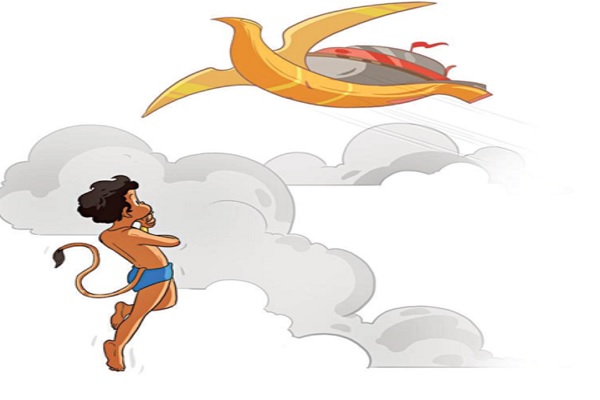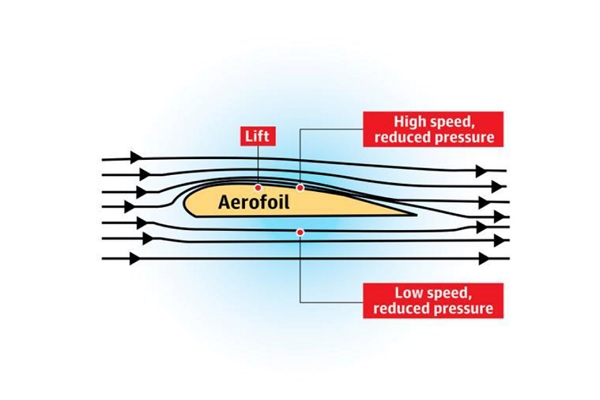It’s all in the shape
- POSTED ON: 29 Jul, 2021
- TOTAL VIEWS: 472 Views
- POSTED BY: Jagadeesh Kanna
- ARTICLE POINTS: 150 Points
The story so far: Megnath learns the secrets behind Lord Vishnu’s weapons.

While Megnath is mastering rocket technology, Hanuman is still a playful, curious kid. One day, he sees Ravana’s Pushpaka Vimana being flown by Kumbhakarna. He runs to his father, Kesari.
Hanuman: Dad, did you see that? A monster in the Pushpaka Vimana cockpit.
Kesari: That’s Ravana’s brother, Kumbhakarna.
Hanuman: But I hear that he’s always asleep.
Kesari: Well, he performed penances to please Brahma. But a scared Indra requested Saraswati to help. So, instead of asking of Nirdevatam (annihilation of devas), due to Saraswati’s spell, he asked for Nidravatam (sleep).
Hanuman: That isn’t fair!
Kesari: Sometimes, to win over evil, the gods have to intervene in such ways.
Hanuman: I don’t agree. Anyway, I want to know how the Pushpaka Vimana carries such a heavy load.
Kesari: First, you need to understand how an aircraft flies. Talk to your friend Nala. Aah! here he is. Nala, your friend wants to know how an aircraft carries a heavy load and still manages to fly.
Nala: Very simple, uncle. It is to do with: high-speed low-pressure, low-speed high-pressure.
Hanuman: Simple? I do not understand.
Nala: In Kali Yuga, they call it Bernoulli’s Principle. According to this, every aeroplane that flies in the troposphere uses pressure difference to generate lift. Being heavy or light doesn’t matter; if you are able create this pressure difference with a proper aerodynamic shape, you can generate lift.
Hanuman: This is also too technical. I still don’t get it.
Nala: Let me simplify it.
1. Take a hair dryer, aim it towards the ceiling and turn it on. It produces a vertical stream of air.
2. Now place a ping-pong ball directly over the nozzle, in the
Here is another example.
1. Inflate two balloons and tie each end with a 30 cm-long string.
2. Tape the loose end of the two strings to the underside of a table, a window or to a door frame, such that the balloons dangle upside down. They should be around 5cm apart.
3. Take a straw and blow forcefully between the balloons.
Can you see what happens? The balloons will come together when you blow between them instead of moving away. This is because pressure between the balloons reduces due to high speed of air. And the relatively higher pressure around them push the balloons closer.
Hanuman: But an aeroplane is different from a ball or balloon.

Nala: Both these examples use spherical or oval objects. For aircrafts, we use a shape called Aerofoil.
Hanuman: What?
Nala: It is like an inverted fish with a curvy top and a flat bottom. Look at birds’ wings, or the wings of an aeroplane. The aerofoil shape forces air to move faster over the top. When speed increases, the pressure decreases, according to Bernoulli’s Principle. In the flat bottom part, the speed of air molecules is slower so pressure is higher. So the shape increases the lift for the aeroplane owing to the higher pressure at the bottom.
Hanuman: Now I get it! The aerodynamic shape is responsible for flight, and that mainly works on pressure difference.
Nala: Yes. Now, that’s enough science for today. Come, let’s practise with our gada (mace).
The author is founder and CEO, Vaayusastra Aerospace, an IIT-Madras incubated ed-tech startup that offers Air Science workshops for children between five and 14 years.
Now that you’ve read this, here’s an activity for you. Can you spot these words from the story in the grid?